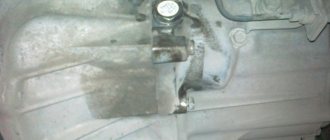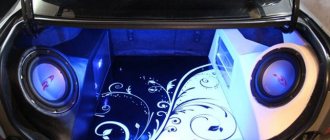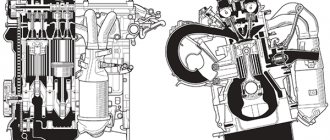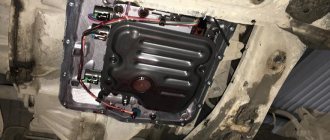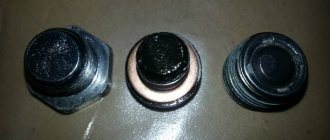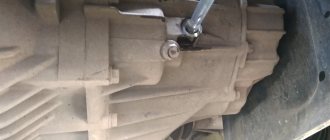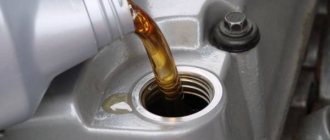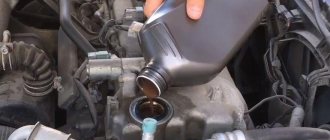03/10/2021 10,490 Consultation with a specialist
Author: Ivan Baranov
Hello! Please tell me, I have a 2014 Corolla, do I need to change the oil in the variator? There are a lot of opinions and they are all different. And one more thing: there are no oil change filters available for sale with these boxes. (Diamond)
Good afternoon. Indeed, maximum attention must be paid to the issue of operating a CVT gearbox. This is because if a machine with such a unit is used carelessly, the probability of its failure is very high.
[Hide]
Product Description
There are two types of transmission fluids for continuously variable automatic transmissions in Toyota cars.
The difference between them is that Toyota CVT Fluid TC was developed for Aisin CVTs released before April 2012, and Toyota CVT FE oil was developed after. The second product is characterized by energy-saving properties and a way to ensure fuel economy.
However, in Russian realities, its viscosity could not cope with long-distance driving, especially with overtaking on the highway. As a result, at the end of 2015, Toyota sent a bulletin to official service stations, which stated that cars manufactured after April 2012, but operated in the northern regions of Russia, should be filled with an older product.
TOYOTA CVT Fluid TC
Automotive oil is the original lubricant for CVT gearboxes of Toyota and other brands. The product has a reduced viscosity, which ensures fuel economy and comfortable vehicle operation at subzero temperatures. The lubricant is not aggressive towards copper-containing parts and does not lead to their corrosion.
The lubricant is made from a hydrocracking base with the addition of detergent and anti-wear additives.
TOYOTA Genuine CVT Fluid FE
Technical fluid is a synthetic lubricant for CVT gearboxes of Toyota cars and some other brands. The product is made on the basis of a hydrocracking base using an optimal package of detergent and anti-wear additives that do not cause corrosion of copper-containing parts. Due to the reduced viscosity, the oil provides fuel economy and excellent low-temperature characteristics.
What kind of oil to pour
The choice of transmission also depends on the nature of the vehicle's use, as well as weather conditions. The manufacturer only regulates the standard for such a substance – ATF-IV; this liquid is used for topping up the most modern units and in its properties is far ahead of its competitors. In addition, there are 3 main types of liquids on the market:
- Minerals . The 2015 Toyota Corolla is not suitable for changing the oil in the CVT, based on its composition and structure. Even when used in the far north, the variator will not withstand the stress of using such a substance and will quickly fail. Therefore, this oil is the most unsuitable for use in this system and the least popular.
- Semi-synthetic transmissions. Such products are more popular than mineral ones due to their composition, which partly consists of high-tech components. Such substances are suitable for use at low temperatures, in harsh weather conditions, and also during long mileage, since such a composition is less susceptible to fluidity.
- Synthetic products are the most popular due to their high quality composition and consumer properties. This product is high-tech and is recommended to be used on an ongoing basis, regardless of the manufacturer. Compared to competitors, it has better washing and cooling properties and retains its original qualities for several years.
Specifications
| Name | Meaning | Unit | Test methods | |
| TOYOTA Genuine CVT Fluid FE | TOYOTA CVT Fluid TC | |||
| Kinematic viscosity at 100°С | 5.34 | 7.25 | mm²/s | ASTM D445 |
| Kinematic viscosity at 40°С | 22.9 | 30 | mm²/s | ASTM D445 |
| Flash point | 175 | °C | ASTM D92 | |
| Pour point | -42 | -55 | °C | ASTM D97 |
| Density at 15°C | 0.856 | 0.87 | kg/m³ | ASTM D1298 |
| Viscosity index | 180 | 203 | ASTM D2270 | |
| Appearance of oil, grease | transparent | transparent | visually | |
| Color | amber | red | visually | |
| Apparent (dynamic) viscosity, determined on a cold spin simulator (CCS) at -35°C | 8650 | mPas | ||
| Total Acid Number (TAN) | 0.6 | mg KOH/g | ||
| Mass fraction of sulfur | 0.084 | 0.165 | % | |
When should you change your oil?
The lubricant in the variator should be changed according to the established recommendations for this vehicle. As a rule, for most installed robotic transmissions this period is about 40,000 kilometers traveled. At the same time, we note that if the car is being serviced by a dealership, then only they need to change the oil, since if a malfunction occurs with the automatic transmission, the auto repair shop declines responsibility for previously carried out work on this unit. In some cases, when the life of the vehicle is very long, it is recommended to update the fluid more often.
Application area
Toyota CVT oil is designed for use in Aisin K110, K111, K112 CVT gearboxes installed on Toyota, Daihatsu and Lexus cars.
Article number TOYOTA CVT Fluid TC is recommended for use in units manufactured before April 2012, and TOYOTA Genuine CVT Fluid FE - after. You can see what kind of lubricant is poured into your car on the gearbox oil filler cap.
How to change the oil in a Toyota Corolla variator
In the process of changing the oil in the Toyota Corolla Axio variator, there are 2 main types - complete and partial replacement. Each has a specific sequence. If you have certain skills and a special tool, the owner can carry out this procedure independently, but it is better to contact a certified service. For a complete change, you must complete the following steps:
- Lifting the car on a lift and checking the control and drain plugs.
- Installing a container for draining and unscrewing the drain plug. After a while, the waste liquid will flow out by gravity. As usual, this takes up to 1.5 hours. About 30% of the substance is drained in this way.
- This is followed by pouring new material, starting the engine in a standing position and testing all gearbox modes.
- Then again drain the waste substance and dismantle the housing, followed by changing the oil filter and special magnets. This process can evaluate the amount of metal shavings and other deposits, as well as the integrity of the entire unit.
- After this, the body is fixed in its regular place, and the filling is repeated 2 more times.
Release forms and articles
| Name | vendor code | Release form | Volume |
| TOYOTA Genuine CVT Fluid FE | 08886-02505 | canister | 4 liters |
| 08886-02503 | bucket | 20 liters | |
| TOYOTA CVT Fluid TC | 08886-02105 | canister | 4 liters |
| 08886-81480 | plastic canister | 4 liters | |
| 08886-81390 | plastic canister | 5 liters | |
| 08886-02103 | bucket | 20 liters |
Getting ready for replacement
In principle, the process of replacing fluid in a Toyota Corolla engine is not particularly labor-intensive. The main thing is to know the basics in general and correctly perform all the steps described in the instructions in order to do everything correctly. So, let's consider in order all the questions that may interest you.
What MM should I use?
Of course, foreign-made vehicles must be well maintained in order to always be on the move. And Toyota Corolla is no exception. The engine of this car must be filled with only high-quality motor oil, which the manufacturer warns about in the service manual.
A high-quality liquid is nothing more than original engine oil for Toyota Corolla engines. It’s called “Toyota motor oil”. If the auto stores in your city do not have such consumables, then we can recommend that you purchase the liquid from an authorized dealer or place an order online.
How much to pour?
Toyota Corolla engine volumes are about 4.2 liters, depending on the year of manufacture and configuration. But this question cannot be answered unequivocally. You should be guided by the amount of drained waste fluid in order to know exactly how much to pour into the engine of your car.
Or read the operating instructions for your vehicle. Usually in the manual the manufacturer indicates the volume of the internal combustion engine so that owners can figure out how much oil is needed. In any case, to calculate the most accurate volume, you will need a service book. But on average, Toyota Corolla engines contain at least 4.2 liters.
When should you change?
This question came to every Toyota Corolla owner. In principle, the terms for replacing the fluid here are the same as for other vehicles. On average, engine oil changes for a Toyota Corolla should be carried out at least 10 thousand kilometers.
If you are using low-quality consumables for the engine or feel that the engine is not working as well as before, then the replacement frequency can be reduced. Replacement can be carried out after 5 thousand kilometers.
Necessary tools
Before you start work, prepare:
- set of wrenches;
- Phillips screwdriver;
- funnel.
Detecting breakdowns in the transmission system
The variator has a complex structure. The average resource of this unit is 200,000 km. The breakdown of this box is indicated by the appearance of vibration and jerking when changing speeds. The listed manifestations may be the result of wear of the components of the gearbox mechanisms.
CVT transmission diagram
The appearance of knocking noises from the variator indicates the presence of worn bearings. This consumable must be replaced when worn out.
CVT gearbox is demanding on transmission fluid. If the oil has not been changed for a long time, this will negatively affect the functioning of the power unit. CVT maintenance is not cheap.
Full diagnostics can be ordered at an auto center, where technicians will use special equipment to check the condition of all components of the gearbox, engine, etc.
How to measure the lubricant level?
- Place the car in a strictly horizontal position.
- Start the engine at idle speed with the selector lever in position “P”.
- Continue adding oil in small portions. Move the lever to different positions several times, delay for a couple of seconds, then return it to the “P” position.
- The procedure is repeated until the lubricant level reaches normal. It is recommended to drive for a while and then check again.
Vehicle maintenance: rules for draining and filling lubricant
Fluids for CVT and manual transmission
Axial gears require particularly high wear protection (AW) and extreme pressure properties (EP). This is only possible with highly concentrated sulfur additives, so classic type oils are not suitable for clutch or synchronization.
In addition to high wear protection, axle drive oils must have good aging properties - take this into account. Here, too, longer replacement intervals and service life must be achieved. Thanks to stricter pothole guidelines and regulations, CVT oils are becoming thicker and thicker to optimize transmission efficiency.
Analogues of original oils for CVTs
If the price tags for original and recommended oils for CVTs bite, then you can take a chance and fill in fluids from third-party manufacturers. All car manufacturers, most dealers and many drivers recommend using exclusively the original oil that was poured into the car, since in case of incompatibility, poor quality or the use of the wrong additives, breakdowns may occur in the variator, which will result in a much higher cost than purchase of original oils.
Repairing a variator is a very expensive business.
However, there is also a considerable layer of drivers who are not afraid to experiment with their iron horses, and change the fluids to cheaper ones, drive calmly and do not complain about any malfunctions.
Below we present the most popular non-original CVT oils that have proven themselves well in the automotive market. Each of the listed options is applicable for certain brands of cars with certain CVTs. Before adding any liquid, it is recommended to consult with a specialist and make sure that it is suitable.
- Idemitsu CVTF. One of the most popular non-original synthetic oils. It is designed specifically for Jatco CVTs. According to the manufacturer, the oil is almost universal and compatible with most brands and models of cars - Suzuki, Nissan, Infiniti, Honda, Toyota, Subaru, Mitsubishi (officially supplied), Renault, Mazda, Lexus. He also assures that this oil is fully compatible with the following fluids: Toyota CVT Fluid TC / FE;
- Mitsubishi DiaQueen CVT Fluid J1/J4;
- Nissan CVT Fluid NS-1 / NS-2 / NS-3;
- Honda HCF-2/CVTF/HMMF;
- Subaru i-CVT FLUID / i-CVT FG / ECVT;
- Suzuki CVT Fluid;
- Daihatsu Amix CVT Fluid-D;
- Mazda CVTF 3320.
- Nissan X-Trail / Serena / Lafesta / Bluebird Sylphy / Dualis;
Be sure to keep in mind that in the absence of a clearly documented alternative to factory oil from the vehicle manufacturer, you will use other options at your own peril and risk, and in the event of a breakdown, you will not be able to cover yourself with a guarantee. Using untested, little-known oil can lead to complete failure of the gearbox. A clear sign of such a situation will be excess noise when driving, an unpleasant smell in the area of the variator, along with difficulties when driving the car.
How to change the oil in a Renault Koleos variator with your own hands?
When changing the fluid at a professional service station, it is better to ensure that the correct oil is poured that will suit your car. You should do the same when purchasing a substance for changing it yourself during repairs in your garage or box.
Recommendations
how many liters did it take you? The liquid was also very clean and pink... I changed it for the first time at 104 thousand (a car with 60 thousand km came from Japan)... now I will change it for the second time. There are opinions that it is not necessary so often, but someone thinks the opposite ... I don’t understand at all, I haven’t found specific instructions from the Japanese anywhere (
I will now partially change it after 25 thousand)) in general, as far as I know, 30 thousand on average))
Yes, I will do the same right now, 4 liters will be drained and refilled))
I will now partially change it after 25 thousand)) in general, as far as I know, 30 thousand on average))
But with an interval of 40-50, probably... 30 is something too much
I think 50 is too much)))
Considering that no one can specifically answer why it should be changed at all... The fluid is clean, light, and in an automatic transmission, if it needs to be changed, it should be changed once every 60 thousand. I don’t understand why this should be done earlier?
Regardless of the color of the liquid, it still loses its properties, which is why it is recommended to do partial after 30 thousand and full after 50-60.
What properties for example? It’s just that I also hear words, versions and opinions, but what are the specific facts?
hi all! the car does not stand still. mileage is spinning. After reading the service books for Toyota Verso and Rav4 (some configurations have the same variator installed), I found the recommended mileage for replacing the fluid. this is every 40,000 km. I have 41500. I decided that I needed to change it. I bought a Toyota cvt fluid for 1900 rubles and a solvent in a glass bottle for 35 rubles. I didn't buy any gaskets.
Toyota Highlander: automatic transmission oil change
I couldn't find a good manual on the Internet. all with their own shortcomings. Before draining the slurry, we found in the garage a 1-2 meter long hose with a tube at one end, a funnel, a 6mm hexagon and a 19mm wrench. First we decided where to fill it. people pour liquid into different places on the box. I poured through the hole closed with a black bolt. I'll explain why. Through the hole for the 24 bolt it is located on the side, which is not convenient. but I did not find the hole covered with a black layer of mask. To get to bolt 19, you need to remove the air filter. This is tricky, we remove 2 brackets and a pipe, take out the filter itself and under it we find 3 10mm bolts.
Next you need to drain the old fluid. there's a problem here. The 6mm hex drain nut is too tight. we ruined two hexagons. We collected everything in place and went to a friend for JAPANESE hexagons. They tried to unscrew it right in the yard. The URA turned over with a creak.
returned to the garage. unscrew the drain bolt. it poured. Using the same hexagon we climb into the pan and unscrew the measuring tube. it poured. remove the pan and clean it and the magnets from dirt with a solvent. Unscrew the filter and wash it. there was a lot of dirt. dry.
We put everything back together in reverse order. DO NOT screw in the drain bolt! interesting gasket. not rubber, but made of a harder and seemingly brittle material. the waste liquid is dark cherry in color. new bright crimson. Filled it until it started dripping from below. all 4 liters of new life fit. it dripped a little. tightened the drain bolt. let's start. We are waiting for the liquid to heat up to 30 degrees (ahaha, by touch) because I don’t have a scanner at hand, and I’m too lazy to close the contacts.
turned it off, unscrewed the drain bolt, it drips a little. normal turned it on and drove off. If it doesn’t drip, then add more. the excess will drain away.
There really is an effect from the replacement. at speeds of up to 20-30 km/h the car began to drive smoother. it is a fact. I didn't notice anything else.
